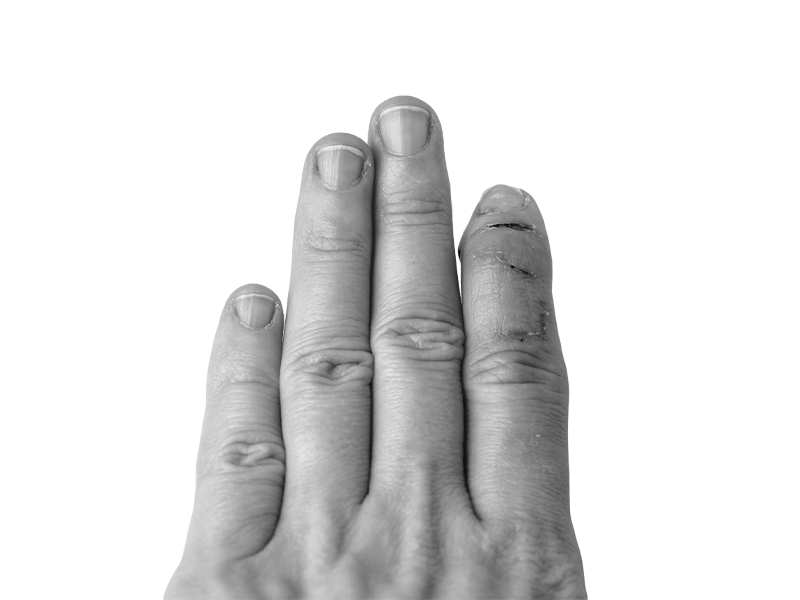What is a Mallet Finger?
Mallet finger is a condition that describes disruption of the function of the tendon that straightens the tip of a finger, causing the end of the finger to drop. A mallet finger can occur in one of two ways. Firstly, the bone on the back of the last portion of the finger can break away where the extensor tendon attaches, resulting in the extensor tendon pulling on the fractured part of the end of the finger, resulting in no ability to straighten the tip. Secondly, the tendon itself can ruptured, leading to the same issue of not being able to straighten the tip of the finger.
Either type of mallet finger can occur at any age. Generally, bony mallet fingers are caused by sudden forces on the end of the finger, for example a ball hitting the end of the finger. Whereas a tendinous mallet finger occurs when the force is more prolonged, for example when tucking in sheets under a mattress. Also, bony mallet fingers tend to be more painful and can bruise, where tendinous mallet fingers can be painless.
Mallet Finger Symptoms
Common things that point to a mallet finger are the following symptoms
- Inability to straighten the tip of your finger
- Pain on the back of the finger between the nail and the closest knuckle
How will your hand therapist know if you have a Mallet Finger?
At Corio Bay Hand Therapy, your experienced hand therapist will spend time learning about your symptoms. Then they will perform a thorough examination of your hands this involves the following:
- Looking at your hands for an extension lag of the last joint of your finger
- Assessing your ability to move the last joint of your finger
- Palpating the joint to assess for pain
Could it be something else?
There are other conditions that can present like mallet finger, these include osteoarthritis, joint dislocations, extensor tendinopathy and others. Your hand therapist has special training in diagnosing and treating all of these conditions.
Corio Bay Hand Therapists are experienced with years of training in determining the cause of your symptoms. There may be the need for additional tests to investigate and these including medical imaging (eg. x-ray and ultrasound).

How do we treat Thumb Arthritis?
Treatment for thumb arthritis is very successful in helping people reduce their pain and increase their ability to participate in the activities they want to. There are different methods to manage thumb arthritis, and your hand therapist will discuss different methods that will most work into your life, these include:
- Splinting or bracing the joint to reduce inflammation and pain
- Paraffin wax treatment and soft tissue massage
- Home exercise program to support the joint
- Advice and equipment to support day to day activities
- Group Arthritis Management classes
- Cortisone Steroid Injection
- Surgery
On average, people are at a stage of drastically reduced symptoms, return to full function and confident in managing their symptoms within 6-8 weeks of Hand Therapy. In some instances, ongoing management is indicated which will be discussed with your hand therapist.
